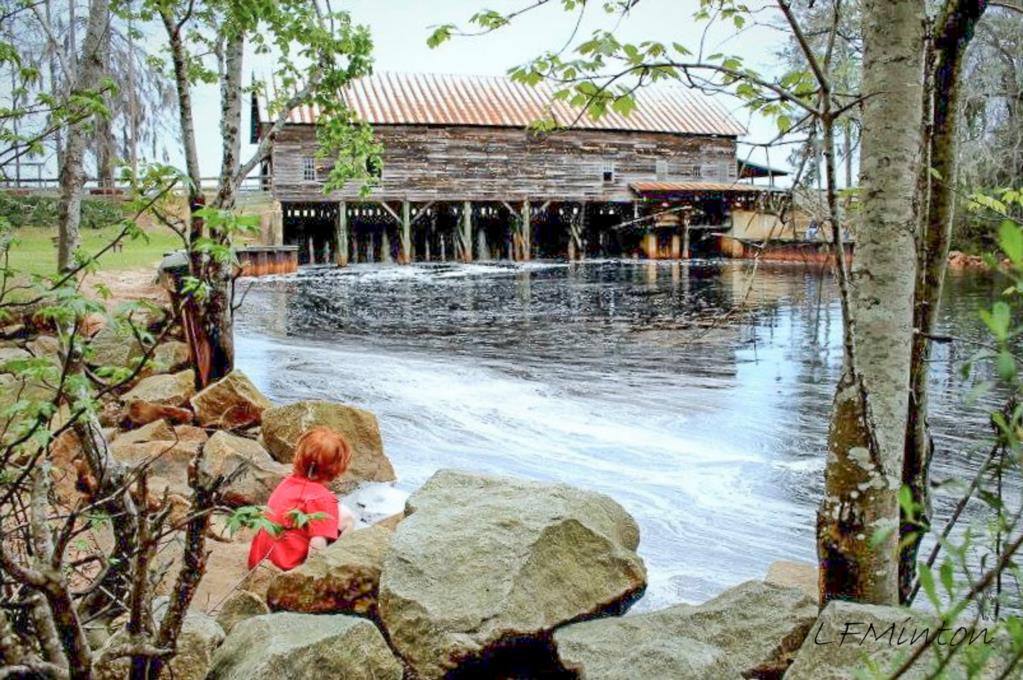
Twin City is home to George L. Smith State Park, a jewel in the Georgia's State Park System and home to one of only two gristmills in working order and in operation by the state of Georgia.
For history buffs, the mill itself is worth a visit to the park. The mill story began in 1879 when Alexander Hendricks needed a place to construct a mill and found suitable land in the eastern part of the county. He joined forces with James M. Parrish, and together they purchased the land from J.J. Moring. The dam and base of the mill were completed in a few months, and by the end of the year, the millpond and house containing a gristmill, sawmill, and a cotton gin were complete.
The dam was considered an engineering miracle of the day and was completely built by hand at the greatest depth of the water. The road to the mill passes through the mill, over the dam, and out the other side. People brought wagon loads of corn or cotton right into the mill, and the mail carrier passed through as well on his way to the Bay Branch of the U.S. Post office which was right on the other side. In 1984, the covered bridge was closed to automobiles.
The mill's first use was for lumber and served surrounding counties, as well as Emanuel. Timber for the mill house was felled near the dam, cleared of bark by hand, sawed into lumber on location, and assembled with hand pegs. Cedar, pine, and oak were the most popular trees for use, and the local community used the lumber for homes, barns, and furniture; the sawmill was one of only a few that continued to thrive in the late 1800s.
Around that same time, a cotton gin was installed and took over as the mill's featured operation. Local and area farmers brought both long-staple, or Sea Island, and short-staple, or upland cotton, to have seeds removed and the lint baled. The cotton came in a cartload at a time, which yielded about half a bale and, as a result, the gin became known as a half-bale cotton gin.
In 1885, the last piece of machinery was installed in the mill - a set of millstones and the machinery to power them - and the gristmill had its start. The turbine used wooden bearings made from a South American wood, Lignum vitae, considered the hardest and densest wood in the world. Because of the concentration of the oils in the wood, the bearings were self-lubricating even underwater.
The grist mill served the people of Emanuel, Bulloch, and Candler Counties for many years. It was used for corn only and for many years ran 24 hours a day; the meal was sold in many states. When water was too low to power the turbine, a diesel engine was used. Two more sets of millstones have been installed in the mill over time, and by 1944, the gristmill was the only functioning machinery in the mill. The gristmill continued to grind corn until 1973, then was dormant until 1998 when the mill was restored. The mill is in occasional operation to this date and can grind as much as 200 pounds of corn an hour.
In addition to the mill, George L. Smith State Park boasts 1,634 acres with tent, trailer, and RV campsites, cottages, a 412-acre lake, picnic shelters, a group shelter, playgrounds, and a primitive campground. Fishermen and canoeists can explore the mill pond, and there are 11 miles of trails for hikers, runners, and cyclists. The park is home to an abundance of wildlife -- from ibis to rare gopher tortoises -- that is easily observed and enjoyed by all ages.
Come, visit, experience our history, and enjoy time in our park and community!
Information on George L. Smith Park and Gristmill courtesy of the Georgia DNR.
Georgia State Park page
|